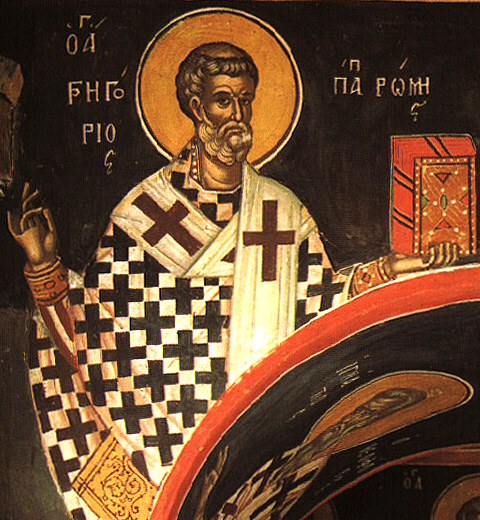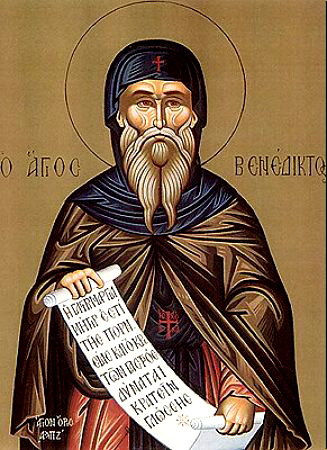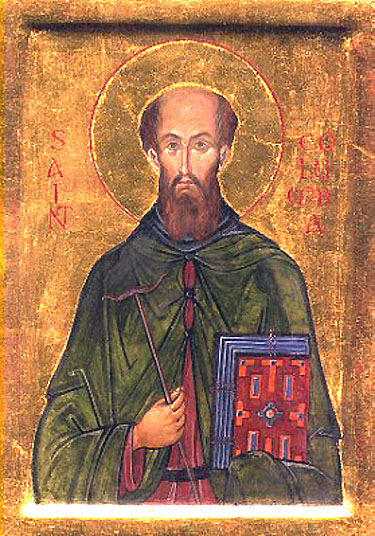The West
Saint Gregory the Great

In the West, the power and prestige of the Roman Papacy increased dramatically under Saint Gregory the Great. In the midst of a general breakdown of civil authority in the face of the invasion of the Lombards, he led the Church in organizing the economic, social, political, and even military affairs of Italy. He successfully negotiated a separate peace with the Lombards, thus effectively setting aside the authority of the Byzantine exarch of Ravenna. Personally very humble, he was also a skilled practical theologian. His Book of Pastoral Rule would have great influence in the Western Church.
Saint Gregory is also particularly remembered for writing the Dialogues, which relate the lives and miracles of a number of Italian saints (hence he is known in the Orthodox Church as Saint Gregory Dialogus). He is also remembered for sending Saint Augustine of Canterbury and about forty companions to England, where they firmly established Latin-speaking Christianity centered in Canterbury, which is the seat of the head of the Anglican Church to this day.
Saint Benedict of Nursia
and his Monastic Rule
Saint Benedict of Nursia (c. 480–c. 550) founded an important monastery at Monte Cassino in Italy. His Monastic Rule, in which he drew freely from the Rule of Saint Basil the Great among other sources, would become the single guiding regulation for Western monasticism for the next five hundred years. This moderate, balanced Rule for cenobitic (communal) monasticism continues to guide the Benedictine Order within the Roman Catholic Church to this day.
From the Prologue of the Monastic Rule
of Saint Benedict of Nursia

Therefore we must establish a school of the Lord’s service, in the founding of which we hope to stipulate nothing that is harsh or burdensome. But if, for good reason, for the amendment of evil habits or for the preservation of charity, there be some strictness of discipline, do not be at once dismayed and run away from the way of salvation, of which the entrance must be narrow.
Rather, as we progress in our monastic life and in faith, our hearts will be enlarged, and we will run with unspeakable sweetness of love in the way of God’s commandments. Hence, by never abandoning His rule, and by persevering in His teaching in the monastery until death, we will share by patience in the sufferings of Christ, that we may deserve to be partakers also of His Kingdom. Amen.

Other Leading Saints
Among the leading saints of this century, mention also must be made of Saint Columba (c. 521–597), a great missionary in Scotland and Ireland; and Saint Sabas (439–532), who built on the preliminary work of the wonderworking Saint Euthymius the Great (377–473) in establishing what would become the leading monastery of Palestine. A stronghold of Chalcedonian Orthodoxy, the Monastery of Saint Sabas is still in existence today.
The Filioque
In Spain, most likely at the Council of Toledo in 589, the word filioque (meaning “and the Son”) was added by the Spanish Church to the Nicene-Constantinopolitan Creed: “And [we believe] in the Holy Spirit, the Lord and Giver of Life, Who proceeds from the Father and the Son.” This action was taken to further emphasize the divinity of Christ to the Visigoths, Arian Christians who first invaded Spain in the previous century. Their ancestors had been converted to Arian Christianity (which denied Christ’s full divinity) by Bishop Ulfilas (c. 311–383), known as the Apostle to the Goths.
However, it was a serious offense for a local council to unilaterally alter the universally accepted Creed which had been written by the first two Ecumenical Councils. And asserting that the Holy Spirit proceeds from the Father and the Son seriously distorts the traditional understanding of the Holy Trinity. So, as we will see, the addition of “and the Son” (filioque) to the Creed in reference to the procession of the Holy Spirit will have grave consequences in later Church history.
